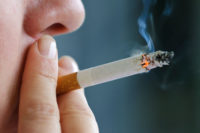Flight attendants have a higher incidence of melanoma, breast, uterine and other kinds of cancer, according to a study published in the journal Environmental Health aimed at characterizing the prevalence of cancer diagnoses among U.S. cabin crew relative to the general population.
The study’s authors note that flight attendants “are a highly understudied occupational cohort that is consistently exposed to several known and probable carcinogens in the cabin environment,” including cosmic ionizing radiation at flight altitude; Circadian rhythm disruption due to night shift work, irregular schedules and frequently crossing time zones; and poor cabin air quality. Many flight attendants working today were also exposed to high levels of secondhand tobacco smoke before in-flight smoking bans were implemented.
Little coverage by OSHA
Flight attendants were excluded from OSHA protections until 2014, when limited protections (such as with regard to blood-borne pathogens) were implemented.
Their exposure to ionizing radiation “is still not monitored or regulated in any way, despite the fact that cabin crew are exposed to the largest average annual effective dose relative to all other U.S. radiation workers.”
Key findings of the study:
- Flight attendants had a higher prevalence of every cancer examined, especially breast cancer, melanoma, and non-melanoma skin cancer among females.
- Job tenure was positively related to non-melanoma skin cancer among females, with borderline associations for melanoma and non-melanoma skin cancers among males.
- Consistent with previous studies, associations between job tenure and breast cancer among women who had three or more children were observed.
The study was conducted by Eileen McNeely, Irina Mordukhovich, Steven Staffa, Samuel Tideman, Sara Gale and Brent Coull.
Click here for more information about the study, including methodology and detailed findings.





